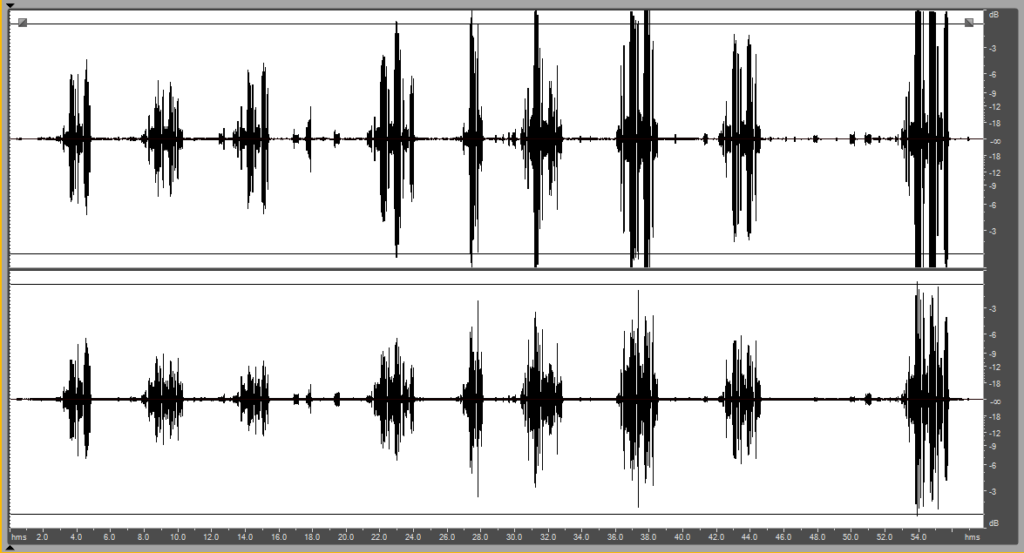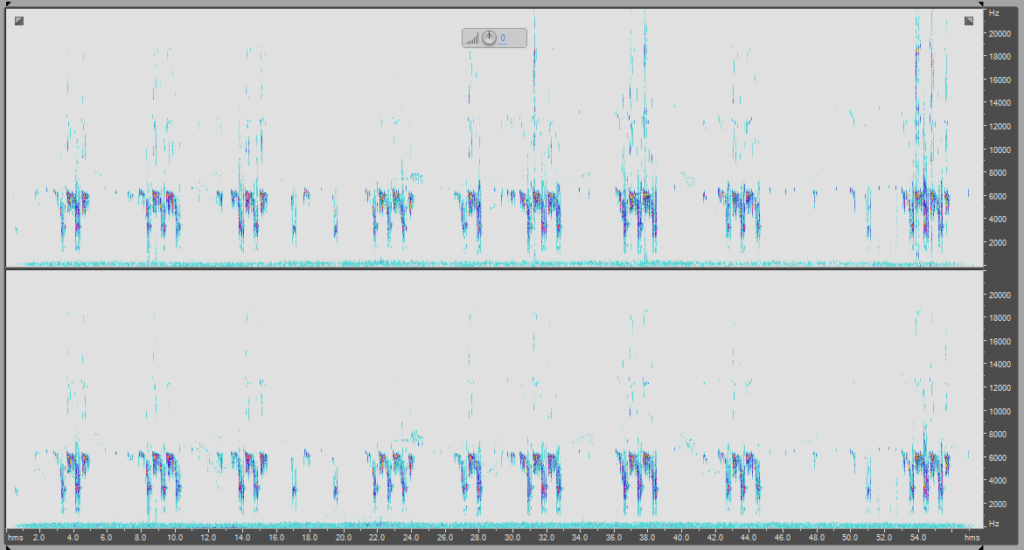The use of a Twin Mono Microphone in a parabolic disc
WARNING to the volume of audio listening because of the high signal distortion on the left CARDIOID channel!
Great Telinga!
A few years ago, on a rainy morning, I devoted myself to storage some
recordings made in 2009 with Edirol R9 and Telinga Twin Science Mic inside a
Telinga dish. I was listening to a recording of Crested Tit when I visually
noticed on the PC screen that one channel was partially saturated, unlike the
second channel where the recording was perfect.
As often happens, using the Twin Science Mic I can save at least one of the two
channels.

The frequencies emitted by the analyzed call of Crested Tit (2,2-6,4 KHz), for
the right OMNI directional channel (below in the picture above) appear to be characterized by at least 4-6 db lower than the left channel where there is a CARDIOID capsule.
The intrinsic mic noise of the two types of capsule seems to be approximately
similar, while the background noise is obviously different with the road traffic
noise in the distance more pronounced in the right OMNI channel.

In practice, using a Telinga microphone system Twin Science Mic, it’s like to
have two completely independent systems together in the same apparatus,
something we now take for granted because it existed for many years, but I would
call a stroke of genius that Klas Göran Strandberg, Telinga Owner, had at the time!

That’s very interesting